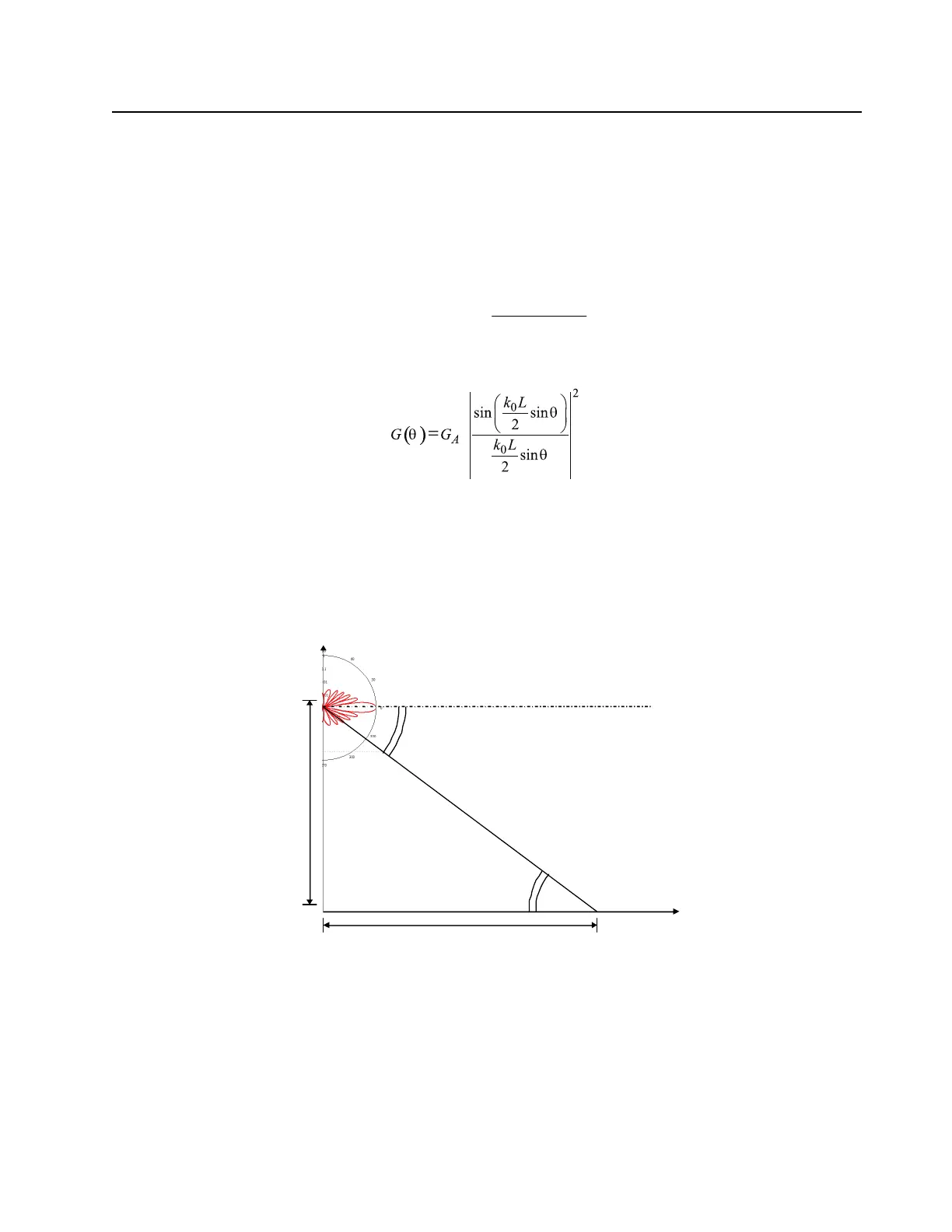MOTOTRBO Base Station/Repeater – EME ASSESSMENT: Exposure Prediction Model D-3
D.2.2 Exposure at Ground Level
Several methods can be employed to determine the EME exposure at ground level. Such an
assessment is not necessary if the mounting height of the antenna is larger than the compliance
distance in front of the antenna, computed using the EN50383:2002 methodology outlined in D.2.1. If
this is not feasible, then the following approach can be employed.
At ground level exposure occurs in the antenna far-field. The antenna phase center is assumed to be
the mounting height. The resulting predictive equation for the power density is:
where is the elevation gain pattern, which is approximated by the following expression:
where is the free-space wavenumber and L is the effective antenna length yielding the
appropriate vertical beamwidth, while H is the antenna height above ground and d is the point of
interest (POI) distance from the vertical antenna projection to ground (see Figure D-2). The
multiplicative factor 2.56 is introduced to enforce near-perfect, in-phase ground reflection as
recommended in [2]. In this case, spatial averaging is not carried out to make the EME exposure
assessment more conservative.
Figure D-2. Schematic of the ground-level exposure model adopted for the assessment
() ( )
)
()
22
4
56.2
dH
GP
dS
+
=
π
(3)
()
G
(4)
/2
0
k
d
H
(
d
array broadside direction
LOS distance
(
d

